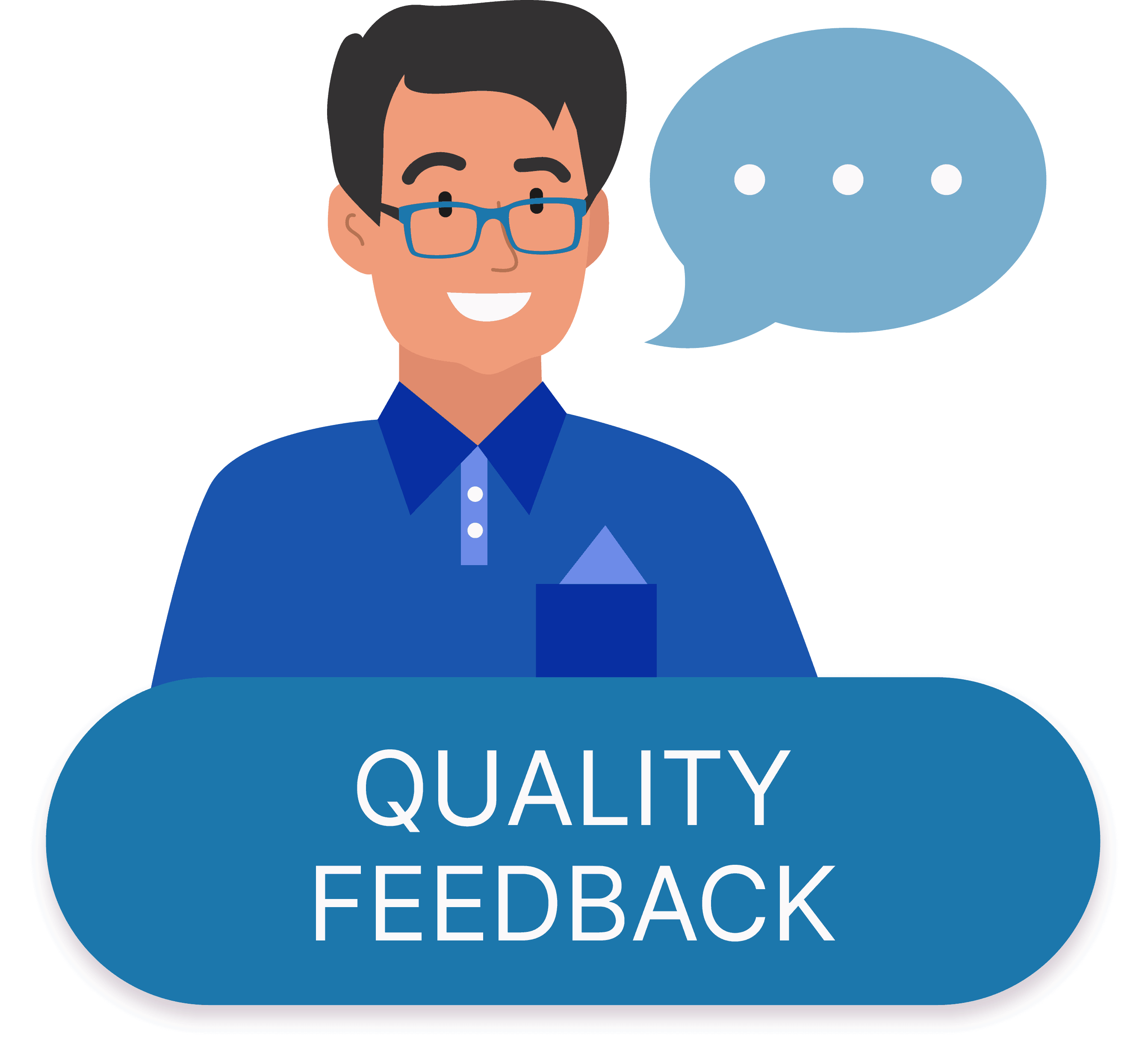Learning Strategies for Students

Quality feedback helps you better understand what high-quality work looks like, how it compares to the expected work, and what you can do to close the gap between the two.
In the classroom, a teacher would…
- tell you what you are doing well
- give you a specific comment about your behavior or work
- suggest a way to improve.
Let’s take a look at some student examples…
Sami makes errors reading out loud.
- The teacher might say, “I really like the way you are focusing on your reading. I noticed that sometimes tricky words seem to make it hard for you to understand what the story is saying. Do you think this is true?”
- The teacher and Sami work together to find an example of this happening.
- Then, the teacher shows Sami how to pause at these tricky words to understand their meaning and place in the story.
Cleo shares that their latest project wasn’t their best work and they would like to improve.
- The teacher might agree that planning ahead to improve is a great idea.
- The teacher might suggest reviewing the project rubric together to see what went well and what didn’t with the project result.
- Cleo now knows what they need to focus on for the next project.
Learning Strategies
MARIO uses 11 helpful learning strategies to help you reach your goals. The 11 strategies are backed by research so you can be confident that these strategies will help you reach your goals.
Quality Feedback
Quality feedback helps you better understand what high-quality work looks like, how it compares to the expected work, and what you can do to close the gap between the two.
Reflecting
Reflecting is when you take the time to look at what has happened and decide what went well and what can be changed next time. A teacher might help you reflect by asking how you think something went and then following up with more questions.
Learning Goals
Having goals help you to understand your next steps and what you are working towards. It is important to keep track of your goals and regularly talk about them with your teacher.
Planning and Predicting
Planning and prediction are the ‘how will I do this’ and the ‘how will I know it is working’ parts of learning goals.
Integrating Learning with Previous Knowledge
This occurs when you can take the success you’ve had in one area and apply it to a new situation or build upon it. In other words, when you can take something you’ve learned and use it in a new situation.
Help-Seeking Behaviors
Help-seeking behaviors empower you with the skills to find resources to get help when needed. In other words, what are the things you can verbalize about what you need to learn to make sure you have success?
Learner Self-Assessing
In this process, teachers help you think about your learning, usually during learning conferences, and reinforce and/or adjust expectations. In MARIO for Me, this would include the rubric you complete before a conference.
High-Expectations
Setting and holding high expectations teaches you to find the balance between learning that is challenging and learning that is motivating. This requires you to think about how difficult a task is, the effort you put in, the outcome, the challenges, and the motivation that happens in your learning.
Improving Effort
Improving effort is noticing a specific behavior and suggesting ways to improve to get closer to the goal. This can be done by you or your teacher.
Conceptual Change Conversations
Conceptual change conversations happen when a teacher helps you understand a misconception about the learning or situation. In other words, when you misunderstood something and you and your teacher talk about it.
Improving Self-Efficacy
Self-efficacy is your ability to be successful and believe that you can do something well. Improving your self-efficacy allows you to tackle bigger goals and become more independent. Notice when you make changes that work. This is a good way to know that you are improving your self-efficacy.
